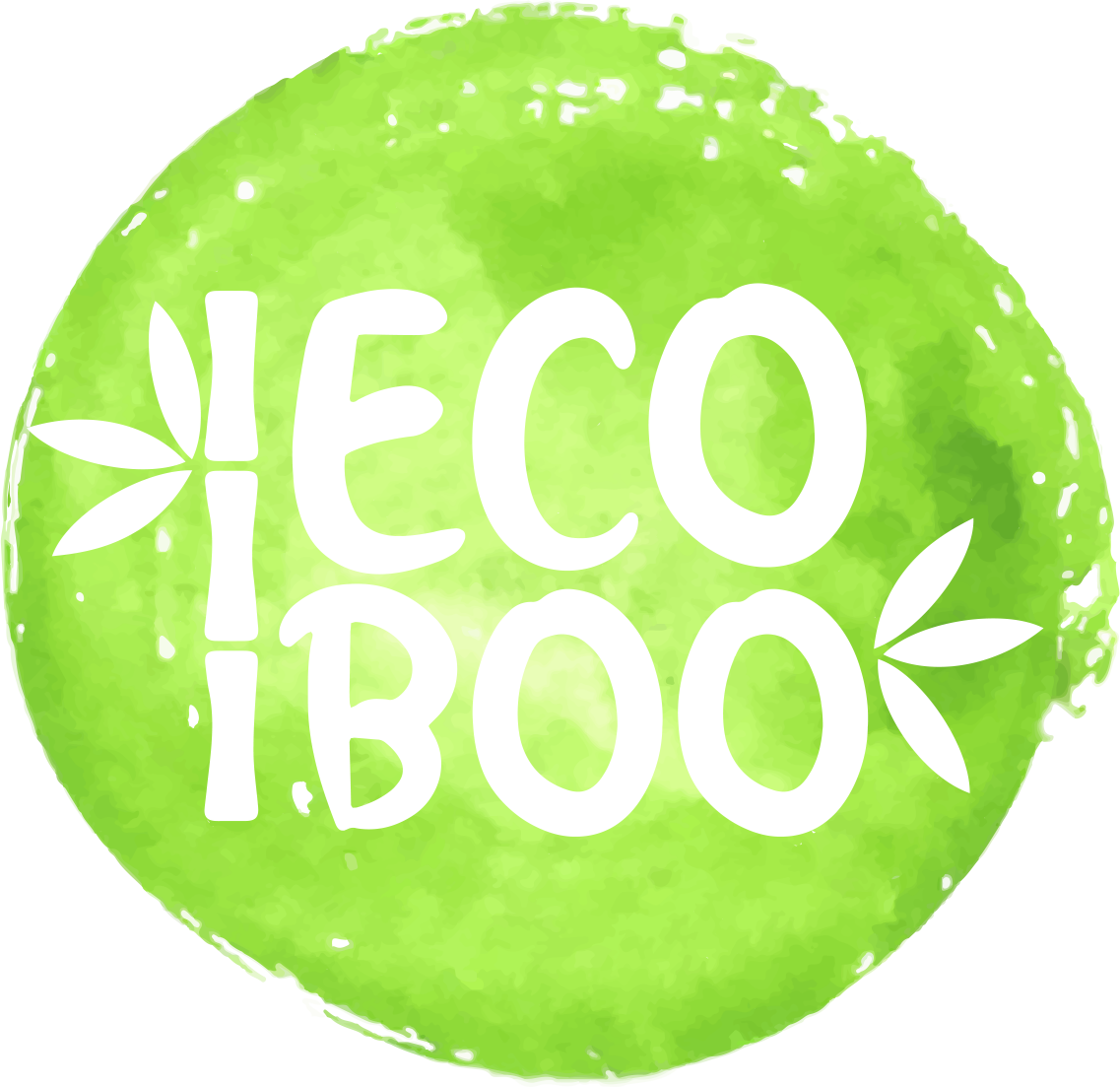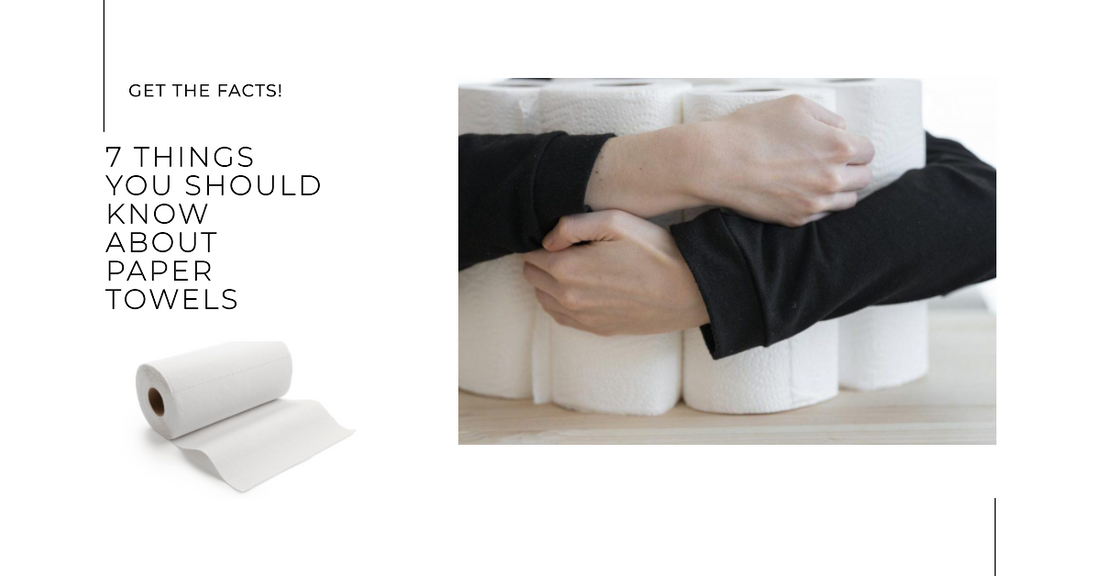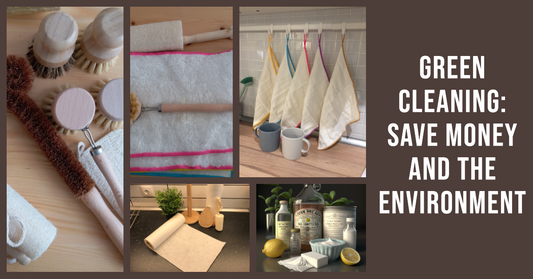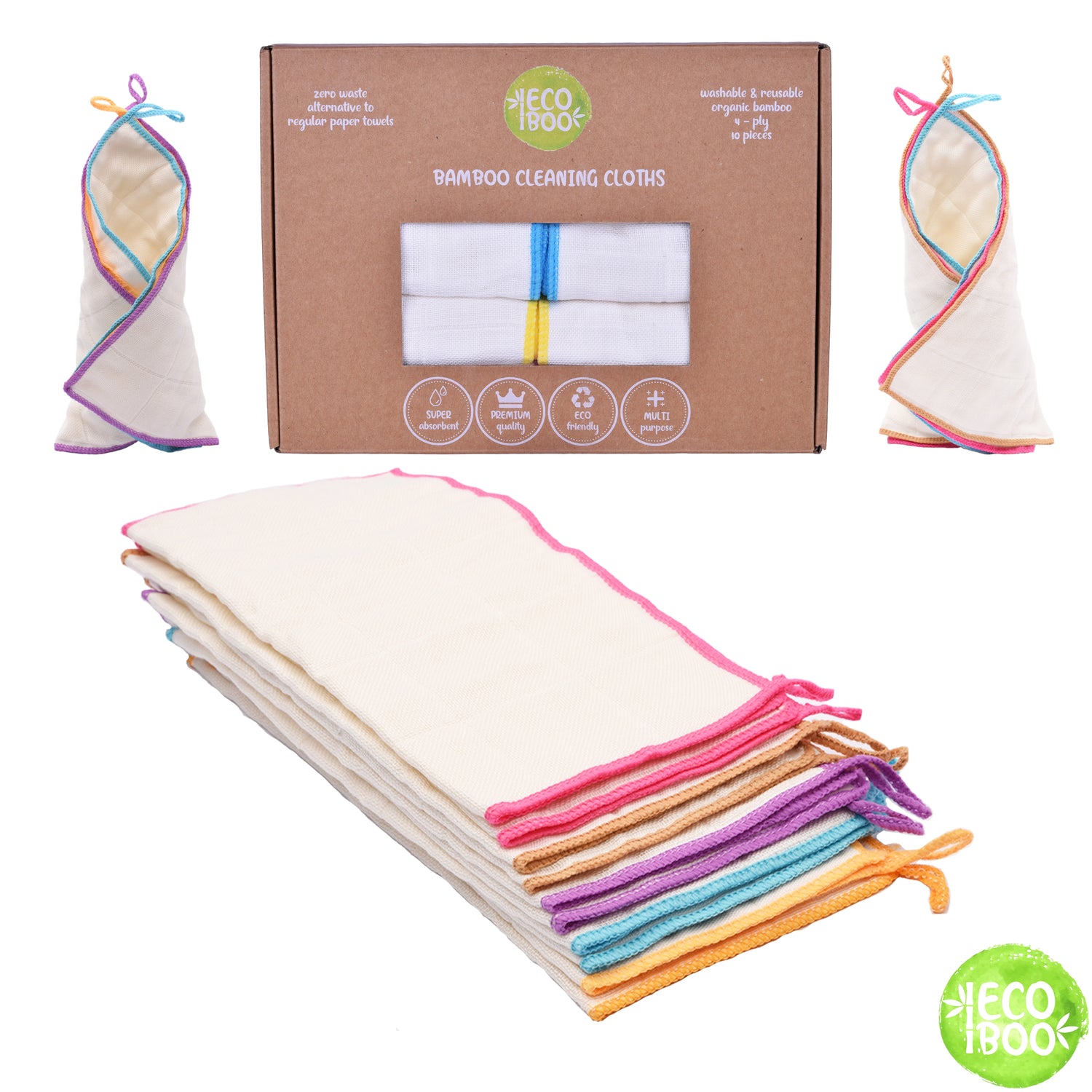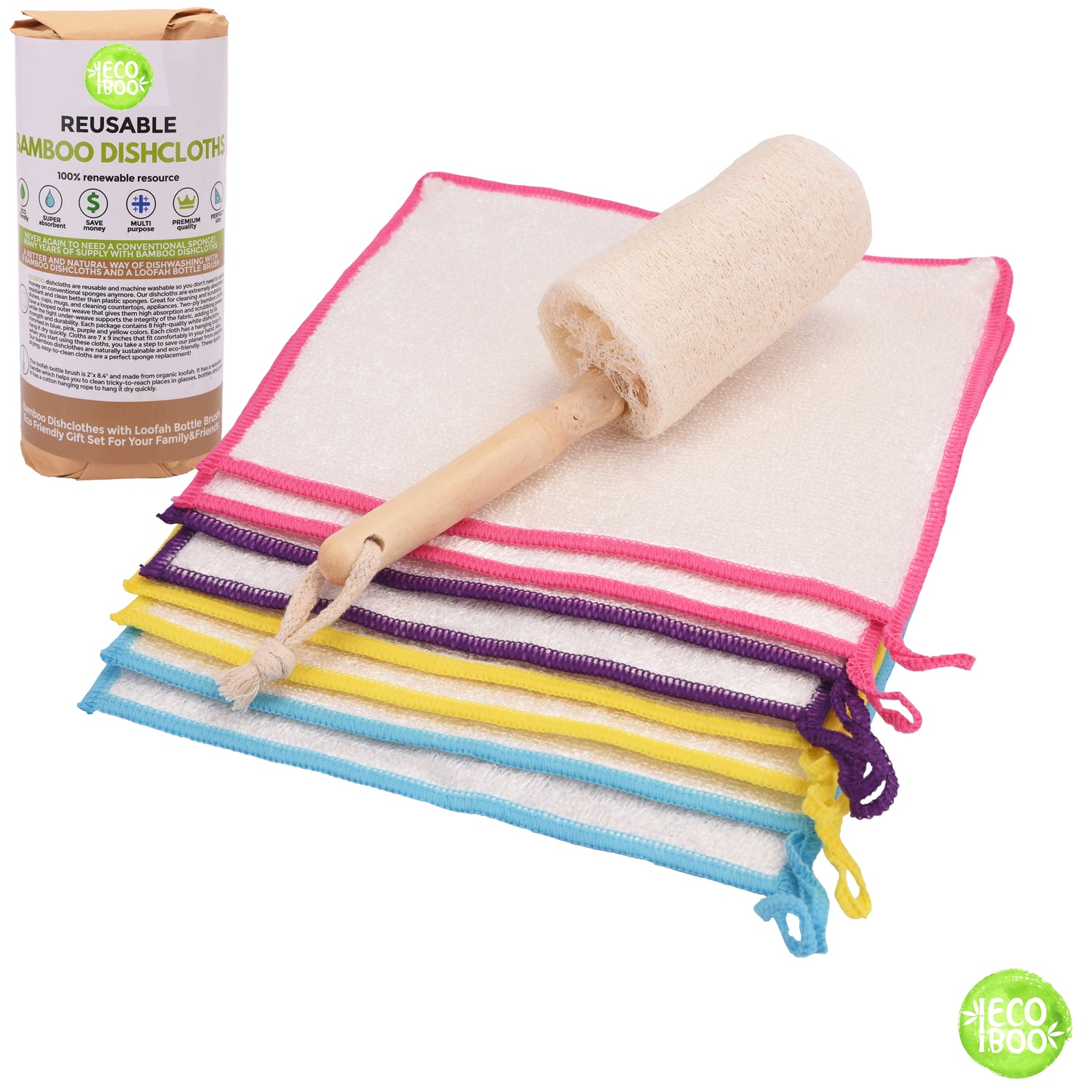Table of Contents
For many, paper towels have become a ‘can’t live without them’ item.
From kitchens to bathrooms, you could probably find a roll of paper towels in almost every home in America.
But who invented paper towels and how did they become so indispensable?
How paper towels are made?
Who are the major brands of paper towels?
Can paper towels go into the microwave?
Can paper towels scratch glass?
Can paper towels be recycled?
Why paper towels are bad for the environment?
Today, I am going to answer these common questions about paper towels.
Let’s dive right in.
Who invented paper towels?
Before paper towels, we used cloth towels to both dry our hands and clean up our messes.
The idea for the paper towel originally came from Clarence and Irvin Scott brothers in 1879.
They had created a thinner version of the towel we know and love today.
It was first created to be used for medical reasons, as a light toilet tissue.
Then one day, in 1907, Irvin’s son Arthur had an issue.
A truckload of toilet tissue arrived at his factory, which was way too thick for the very delicate product they’d become known for.
Instead of sending it back and wasting the product, he found another use for the tissue.
He’d heard a story from a local teacher who would give sick children pieces of paper to dry their hands so they wouldn’t contaminate the communal washroom cloth towels. That’s a smart lady!
Inspired, he had the accidentally thicker tissue reformed into towel-sized sheets and sold it as disposable paper towels instead of cloth towels to dry hands in washrooms.
The invention was accidental, sure, but a medical success!
It would help stop the spread of colds and diseases. No more communal cloth towels contaminated with teeny tiny germs.
The first paper towel was named Sani-Towel and was sold to restaurants, hotels, and railroad stations and distributed in their washrooms.
Then in 1931, Arthur had another lightbulb idea.
He introduced the Sani-Towel to the kitchen, which was when the concept of the paper towel as we know it truly came to life.
At first, people were hesitant to use this unfamiliar product.
It took years for behaviors to change and for paper towels to be accepted with open arms and dirty dishes.

How paper towels are made?
Paper towels are made from either virgin or recycled paper pulp which is extracted from wood or fiber crops.
They are sometimes bleached during the production process to lighten coloration and may also be decorated with colored images on each square (such as flowers or teddy bears).
Resin size is used to improve the wet strength
If these details look complicated, here is a 60-second video of how paper towels are made:
Where are paper towels made? Who makes them?
Let’s look at some major brands in the paper towel industry that are manufactured in the United States of America according to this website:
Scott® brand paper towels are made in America. The Kimberly-Clark corporation manufactures them in various facilities across the United States, including sites in Chester, Pennsylvania; Jenks, Oklahoma; and Beech Island, South Carolina.
Bounty paper towels are made in a variety of locations. The manufacturer says these include Mehoopany, Pennsylvania; Albany, Georgia; Green Bay, Wisconsin; Cape Girardeau, Missouri; and Oxnard, California.
CVS Earth Essentials paper towels are made in the USA, according to the CVS website. They are made from 100 percent recycled content.
Viva paper towels come from American plants in locations such as Jenks, Oklahoma; Marinette, Wisconsin; and Beech Island, South Carolina. These locations were provided to me by a company representative.
Sparkle® paper towels are also made in the USA. A company spokesperson tells me they are manufactured in Hey Heather. Sparkle is manufactured at Alabama, Florida, Georgia, Oklahoma, and Oregon facilities.
Can paper towels go in the microwave?
Most paper towels are microwave safe. In fact, you can use a paper towel to cover some foods so they don’t spit during cooking or reheating.
If you do use a paper towel while microwaving, it’s best to use shorter intervals so you can check both the food and the paper more frequently.
Recycled paper towels, paper towels with printing, and brown paper bags should not be used as they pose a potential safety hazard.
Can paper towels scratch glass?
The goal of cleaning mirrors, windows, and any glass, really, is a sparkling clean surface without a speck or smear to obstruct your view.
Paper towels sabotage that goal by leaving behind lint.
Opt for reusable paper towels, or an old t-shirt instead of paper towels whenever you want to clean glass.
Can paper towels be recycled?
Paper towels, napkins, paper plates, and tissues are all paper products, however, they are never recyclable.
Because they usually come in contact with food wastes, greases, and possibly bodily fluids, they are not able to be “cleaned” during the recycling process and should not be with other “clean” paper waste like magazines and copy paper.
Always throw these items into the trash. Note: Even unused napkins and plates should not be recycled.
However, they should be used for something before they are thrown away. (Tissue boxes and paper towel cores are recyclable with paper).
Why paper towels are bad for the environment?
1. Paper Towels cannot be recycled
Paper towels are classified as contaminated waste and end up in landfills. Every time.
Although paper towels can be made from recycled paper, they are usually the last paper product to be made in the chain. This means the paper they are made from has been recycled up to seven times before, so the fibers are too short in paper towels to be used again.
2. Decomposing paper towels contribute to global warming
In the USA alone, 6,500,000 tons of paper towels are sent to landfills each year. The decay of paper products produces methane gas which is 28 times more potent than carbon dioxide. This is creating a significant threat to global warming.
Worse still, paper towels are often put in plastic bags, creating further problems in landfills.
3. The average paper towel generates 7.5gms/CO2 or 22.5 gms/CO2 per dry.
Life Cycle analysis shows that the effects of felling raw materials, transportation, manufacturing, packaging, and storage, produce a significant amount of CO2.
To make one ton of paper towels, 17 trees are cut down and 75,700 liters of water are consumed and polluted.
4. Paper Towels are one of the biggest causes of blocked drains
Facilities managers constantly tell us that the reason they switch to hand dryers is that they are fed up with paper towels blocking the toilets.
People like to use them as toilet seat covers for better protection than thin toilet tissue.
Unfortunately, the fibers don’t break down like tissue and blockages always occur.
All of these are the environmental effects of paper towels.
If you want to reduce your paper towel waste and save the environment and your money, then reusable paper towels are a great option.
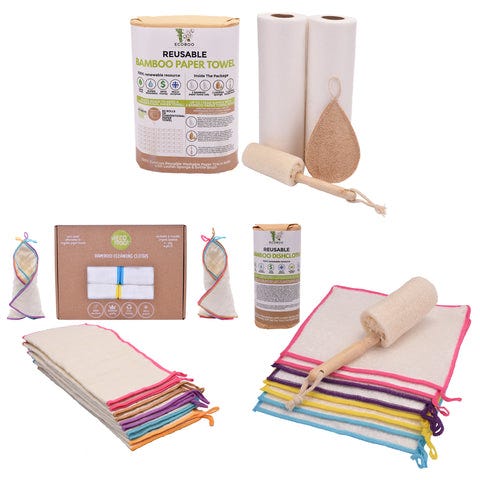
Reusable paper towels, dishcloths, and loofah sponges from ECOBOO
Who we are?
ECOBOO is a family business located in Sheridan, Wyoming.
The company was born in 2018. Being passionate about the ecological lifestyle, we were inspired by the planet’s current need to create in-demand, sustainable and ecological products that reduce everyone’s carbon footprint.
Our main goal is to produce natural, eco-friendly alternatives for household disposables.
Rather than wasting your money and time, you can choose to save these for your future.
We would love to help you save your money and time.
A true zero-waste lifestyle is not for everyone, but with our products, living in a more eco-responsible way by taking small daily actions becomes much easier.
You can buy our natural bamboo fiber and bamboo rayon reusable paper towels from our website.
You can also buy from our Amazon store as well.
